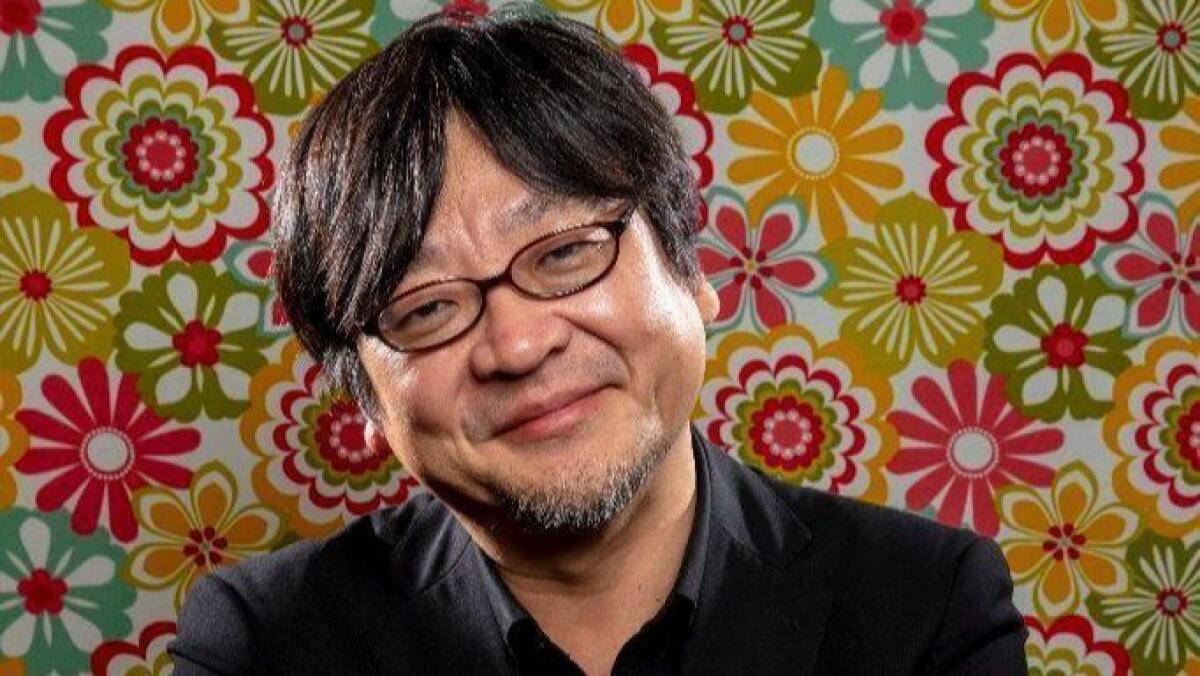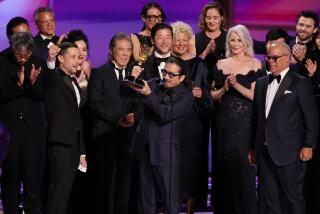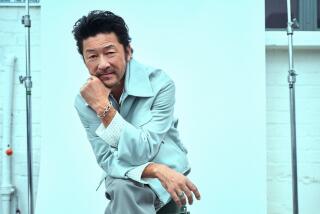How the Japanese animated feature ‘Mirai’ seeks to change the way children are seen on screen

- Share via
To Americans, the anime film genre probably conjures flights of fancy for kids: ghosts or dragons or being transported to mystical lands. But in Japan, animated features routinely appeal to adults as well as, or instead of, kids. One legend of Japanimation, Mamoru Hosoda, has been able to paint intimate, family stories on that canvas.
“When you think of an anime with a protagonist who is a child, it’s usually an adventure or the child becomes a hero and saves the world or something,” says Hosoda, through a translator, during a recent trip to Los Angeles.
“Not just anime films; Hollywood films. When there’s children, there’s always a big event. [Like] Harry Potter. I wanted to make this nothing like that. I really wanted to depict the daily life of a child.”
His new film, “Mirai,” does contain mystical elements, but also reflects his admiration for “Western children’s literature” in which “stories are about one day when it starts raining; that’s it. That’s all that happens. There’s this warmth, this quietness, of children’s lives. There’s not enough movies, not that many movies, that are similar to [that], I feel.”
After premiering at the Cannes Film Festival earlier this year (a rare distinction for an animated film), “Mirai” gets its U.S. release beginning Friday, with a new English-language dub including vocal performances from John Cho, Rebecca Hall and Daniel Dae Kim. The distributor, GKids, has emerged as the preeminent outlet for international animation in the U.S., as well as canny experts at securing animated feature Oscar nominations for such films as “Song of the Sea,” “My Life as a Zucchini” and “The Breadwinner.” “Mirai” looks like its prime contender in this year’s race.
The story is told is from the point of view of a 3-year-old boy distressed over the arrival of an infant sister. He is visited by visions of family members from different times in their lives, including his great-grandfather as a motorcycle-riding young man before World War II; his mother as a mischievous child his age; and his infant sister, Mirai, as a teen from the future. These visitations, unlike Twain’s Christmas ghosts scaring Scrooge straight, gently teach the boy to empathize by taking him along to see them as people with hopes and dreams.
“I think of sci-fi or fantasy as a tool to figure out the truth of what really being a human is about, or a tool to find out a different side of humans,” says the director and co-writer. “I don’t want to depict the fantasy for fantasy’s sake or sci-fi for sci-fi’s sake as entertainment. I really want to portray what you can learn about others through fantastical or sci-fi elements. So when the main character meets other people through those elements and changes — it’s not those elements that help him change; it’s really what he feels inside.”
REVIEW: The playfully imaginative anime ‘Mirai’ tells a family story that’s not just for kids »
Hosoda’s filmography began as an animator in popular series such as the manga-based “Crying Freeman,” “Dragon Ball” and “Sailor Moon.” He directed TV and film entries in the “Digimon” media franchise – TV shows and card and video games springing from the massively popular “Digital Monster” toys. Then in the mid-2000s he gained prominence as a feature director in his own right with widely acclaimed, award-winning hits such as “The Girl Who Leapt Through Time,” “Summer Wars,” “Wolf Children” and “The Boy and the Beast.”
The inspiration for “Mirai” came directly from Hosoda’s experience, though it’s a film he couldn’t have made just a few years ago.
“During ‘Wolf Children,’ I didn’t have any children,” he says of the beloved 2012 tale of a woman who must raise her two half-human, half-wolf kids on her own. “It was a time when we were trying to get pregnant, but [we] had difficulty. ‘Wolf Children’ was a reference to my mother, who had passed away while I was working on ‘Summer Wars’ [2009]; it was a tribute to her.”
At that time, the writer-director was only able to draw on his experiences of being raised, not doing the raising – until he and his wife were able to have a son just a few years later. And then a daughter. And then the trouble began.
“It was a couple of times, many times, hundreds of times,” he says of his son’s extreme behavior in response to his daughter’s impact on the family. “When we first brought home our baby girl, he was interested in her: ‘Who is this?’ Over time, he started noticing his parents were acting different from before; he’s like, ‘They don’t look at me anymore.’ So he threw tantrums here and there.
“When I saw my son on the floor throwing a tantrum like he’d lost his love, he didn’t look like he was some selfish or spoiled child; it really made me feel like – you know, even adults, or younger versions of ourselves, probably look that way when we’ve lost love. It made me think that, really, is true human nature. We all have aspects of ourselves, whether we’re 4-year-olds, 24-year-olds, 44-year-olds; we want to get on the ground and start crying and complaining we lost love.”
Since the protagonist, Kun, is 4, Hosoda wanted to do something unusual for the genre: represent children realistically.
“In previous anime, children were really drawn as small adults. They’re just smaller; they acted the same way. They move the same way. But [in reality] they have different centers of gravity, they have bigger heads, they walk differently than adults do. We really didn’t want to draw children carelessly.”
Fortunately, as the characters weren’t based on dragons or talking pigs, Hosoda was able to use their actual sources as references.
“Because my son is the model, I brought my children – both my son and my daughter – to the studio. We had the animators all surround them and not just sketch them; hold them to feel how heavy they are, touch them to feel how soft they are. The thinness of their hair. Every single little thing.
“The animators were reminded of how fun it was to draw children. Because for the last 30 years, since ‘Grave of the Fireflies’ and ‘My Neighbor Totoro,’ children weren’t really depicted realistically in anime. So I think they were like, ‘Oh yeah, this is how children are.’ ”
Hosoda says his son wasn’t embarrassed to see a version of himself on screen.
“I had taken him to the studio many times, he knew he was the model for this movie. He enjoyed the film just like any other normal child would.
“He saw it with my wife, and my wife’s opinion was, ‘Seeing this movie, I can understand how much you love our children.’ It made me really happy.”
More to Read
Only good movies
Get the Indie Focus newsletter, Mark Olsen's weekly guide to the world of cinema.
You may occasionally receive promotional content from the Los Angeles Times.











